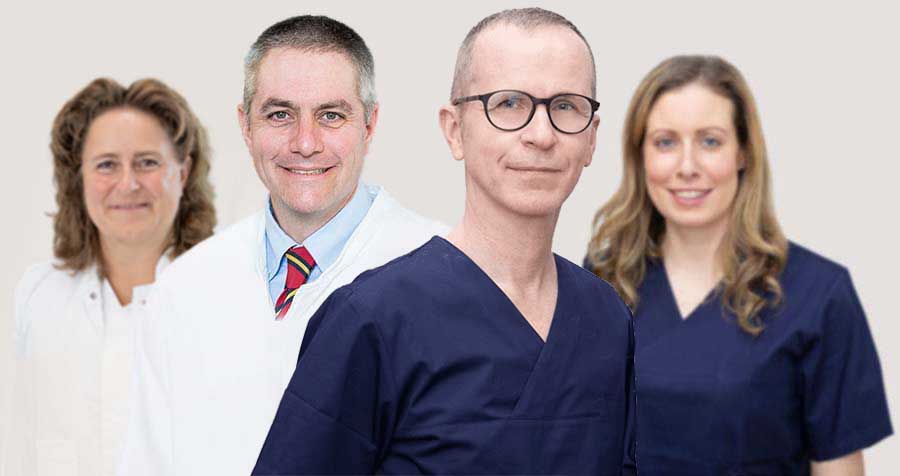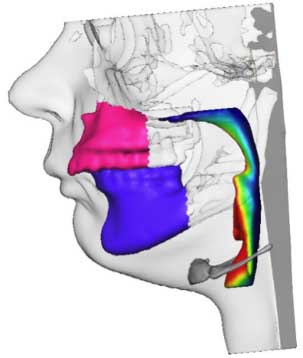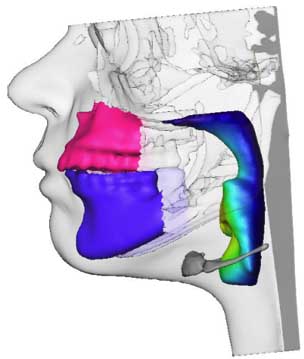Sleep apnea
is curable
Are you coming into questions for
curative treatment for your sleep apnea?

Sleep apnea is curable
Are you coming into questions for curative treatment for your sleep apnea?
Office hours
Monday - Friday - 7:00 - 18:00
Consultation appointments
Due to the high demand for appointments, we can unfortunately only offer you appointments with an expected lead time of approx. 8-12 weeks.
Prof. Dr. Dr. Peter Maurer
Appointment
Call us now to schedule your consultation and root cause evaluation for your sleep apnea today.
Curing sleep apnea at the SeegartenKlinik
Benefit from Germany's leading clinic for the elimination of the causes of OSAS. If you too no longer want to settle for permanent and lifelong ventilation with CPAP (Continuous Positive Airway Pressure), you can find out about the only curative therapy method for obstructive sleep apnea on this page.
Never again CPAP Mask - Find out if your sleep apnea disorder is curable too
What do our patients say?
Sleep apnea
The so-called sleep apnea syndrome (SAS or OSAS for short) is caused by periodic breathing disorders during sleep. Sleep apnea, even a mild form, significantly increases the risk of death from secondary diseases. In the specialist literature, it is assumed that there is a high all-cause mortality.¹
What causes the symptoms of sleep apnea?
The brief cessations of breathing of up to three minutes, also known as apneas in technical terminology, lead to repeated awakening reactions in the body. Due to the apneas, the oxygen content decreases while the carbon dioxide content of the blood increases. This triggers an alarm response from the body to prevent a further drop in oxygen levels. Thus, sufferers are regularly disturbed in their sleep by the lack of oxygen and the wake-up reactions it causes. Nighttime sleep thus hardly fulfills its function of providing the body with rest.
Sleep apnea occurs when breathing stops at least 10 times per hour for more than 10 seconds. A characteristic feature of sleep apnea is that sufferers usually do not wake up consciously. Only the pulse rate is increased, along with other bodily functions. This makes it particularly difficult for sufferers to identify sleep apnea as the cause of their pronounced daytime sleepiness. Many people thus suffer from the symptoms over a long period of time, although a lack of restful sleep can significantly reduce the quality of life of those affected. Thus, not only daytime sleepiness and microsleep, but also depression, diabetes, and cardiovascular diseases (high blood pressure, stroke, and heart attack)²can result from sleep apnea. Sleep apnea syndrome is treatable and the obstructive form is even curable. Get a first impression of what is possible thanks to state-of-the-art surgery and how we have already helped many sufferers by reading many helpful patient testimonials.
Sleep apnea - different types and causes
There are two forms of sleep apnea. The most common form of sleep apnea syndrome is the so-called obstructive sleep apnea (OSAS). This form is always anatomical and is caused by too narrow airways. Causes can include, for example, a constitutional slackening of the throat muscles or enlarged pharyngeal tonsils. The latter risk factor plays a major role, especially in children.
However, the most common cause of obstructive sleep apnea is the recession of one or both jaws. A recessed and too small upper jaw causes a narrowing through the soft palate. A recessed and too small lower jaw constricts the lower portion of the upper airway through the tongue. The combination of the narrowed airway and the pharyngeal muscles, which relax anyway during sleep, can cause complete obstruction of the airway. Thus, the lungs must create extra negative pressure to ensure that the body continues to receive oxygen. The second, far less common form of sleep apnea is the so-called central sleep apnea syndrome. As the name suggests, it is caused by a malfunction of the central nervous system. The brain literally forgets to breathe. This causes the breathing stops typical of sleep apnea with resulting alarm reactions of the body. If both forms of sleep apnea occur together, it is called mixed sleep apnea.
Sources:
1. https://jcsm.aasm.org/doi/10.5664/jcsm.3600
2. https://pubmed.ncbi.nlm.nih.gov/28209226/
Take the first step to a mask-free life now!
Do you suffer from sleep apnea, would you like to finally get away from life-limiting CPAP therapy and be one of the cured patients? Then contact us today and make an initial consultation appointment at the SeegartenKlinik in Heidelberg. The best thing is: The initial consultation is covered by all health insurance companies.
Sleep apnea is curable
The SeegartenKlinik has made it its business to identify the causes of your obstructive sleep apnea and to eliminate them permanently.


- 3D planning for surgical cure of obstructive sleep apnea.
- 3D planning of the aesthetic result in corrections of malocclusions of the jaws and in sleep apnea surgery
- Surgical correction of airway obstruction
- Analysis and correction of postural deformities in patients with obstructive sleep apnea.
- Analysis of elimination of turbulence in the posterior airway space
- Minimally invasive bone surgery using piezosurgery
- Bone augmentation in the maxillofacial region
Consequences of sleep apnea
Through-sleep disorders
Many sufferers are unable to sleep through the night. This is because the body regularly wakes up at night to get oxygen.
Increased urination
Increased urination, also called nocturia, is considered a leading symptom of OSAS. It is not an inevitable symptom of old age.
Heart attack
The body of those affected is supplied with too little oxygen, which reduces the blood supply to the heart. The result is an often fatal heart attack.
Daytime sleepiness
The main symptom of OSAS is severe daytime sleepiness. The chronic sleep deficit is the main culprit. The body cannot recover sufficiently during the night.
Night sweats
Affected persons sweat excessively at night. Sweat production is greatly increased, especially in the neck area.
Microsleep
Non-restorative sleep leads to poor monotony resistance. Microsleep can be the result. This is particularly problematic when driving, for example.
Snoring
Loud snoring also makes for a very restless night for the partner. Even quiet and regular snoring can be dangerous and should be clarified by a doctor.
Depression
The brain of those affected is very poorly supplied with oxygen by the disease. In conjunction with constant fatigue, the risk of developing depression is very high.
Hypertension
The heart is greatly affected by the body's constant stress response and non-restorative sleep. High blood pressure can trigger other very serious diseases.
Headache
Decreased oxygen supply to the body causes headaches. Tension during the night that accompanies the breathing stops causes, among other things, a pseudo-migraine.
Stroke
Strokes are often the result of elevated blood pressure. Strokes also usually occur at night or in the early morning.
Impotence
Caused by hypoxia, erectile dysfunction (impotence) is a symptom of untreated OSAS.

"CPAP therapy does not reduce the risk of heart attack and stroke to normal levels."
Prof. Dr. Doug McEvoy
University of South Australia
https://jamanetwork.com/journals/jama/fullarticle/2643307
Cure sleep apnea without CPAP mask with the causal therapy
The bimaxillary advancement with CounterClockwise rotation eliminates the causes of obstructive sleep apnea. With the cure of sleep apnea, you will be able to sleep relaxed through the night again and all symptoms such as headaches, fatigue or even increased urination will greatly diminish or disappear completely. Furthermore, the cure of sleep apnea ensures that the probability of suffering a stroke or even heart attack decreases significantly. The risk of depression is also greatly reduced.